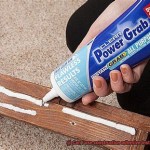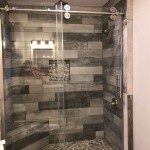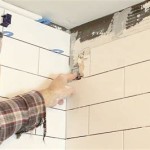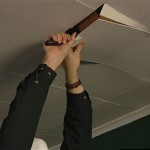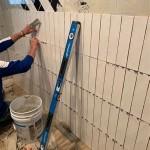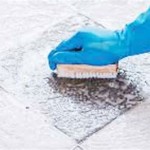Create A Unique Flooring With Penny Floor Tiles Design
Penny floor tiles represent an innovative and visually striking flooring option, enabling homeowners and designers to create a truly unique and personalized aesthetic. This approach involves using actual pennies, arranged and sealed, to form a durable and artistic floor surface. The versatility of penny floor tiles allows for customization in design, pattern, and overall appearance, making it a compelling alternative to conventional flooring materials.
The inherent appeal of penny floors stems from their ability to transform a commonplace object into a sophisticated design element. The warm, metallic tones of the pennies, combined with the potential for intricate patterns and personalized messages, result in a floor that is both functional and visually captivating. The following will explore the various aspects of designing and installing penny floor tiles, highlighting the benefits, challenges, and creative possibilities associated with this unique flooring choice.
Benefits of Penny Floor Tiles
Penny floor tiles offer several distinct advantages compared to more traditional flooring options. These benefits range from aesthetic appeal and design flexibility to durability and potential cost savings.
Aesthetic Appeal: The visual impact of a penny floor is undeniable. The copper hue of the pennies creates a warm and inviting atmosphere, adding character and personality to any room. The reflective properties of the metal lend a subtle shimmer to the floor, enhancing the overall ambiance. Furthermore, the ability to create intricate patterns, incorporate designs, or even spell out words with the pennies allows for a level of personalization rarely achievable with other flooring materials.
Durability and Longevity: When properly installed and sealed, penny floors are surprisingly durable. The pennies themselves are made of a resilient metal alloy that can withstand significant wear and tear. The epoxy resin used to seal the floor provides an additional layer of protection, preventing scratches, dents, and other forms of damage. A well-maintained penny floor can last for many years, making it a long-term investment in the beauty and functionality of a space.
Design Flexibility: The modular nature of penny floor tiles allows for a high degree of design flexibility. Pennies can be arranged in a variety of patterns, from simple geometric designs to complex mosaics. Different finishes can be applied to the pennies, such as polishing them to a high shine or allowing them to develop a natural patina, to achieve different aesthetic effects. Incorporating pennies of different ages and colors can also add depth and dimension to the floor.
Potential Cost Savings: While the initial investment in materials and labor may seem significant, penny floors can be a cost-effective option in the long run. The pennies themselves are relatively inexpensive, especially if sourced from personal collections or obtained through coin rolls. The durability of the floor reduces the need for frequent repairs or replacements, saving money over time. Furthermore, penny floors can increase the value of a property, making them a worthwhile investment.
Design Considerations for Penny Floor Tiles
Planning is crucial to achieving a successful and visually appealing penny floor. Several design considerations should be taken into account, including the overall aesthetic, pattern selection, and penny preparation.
Overall Aesthetic: Before embarking on a penny floor project, it is important to define the desired aesthetic. Consider the overall style of the room and how the penny floor will complement the existing decor. Will the floor be modern and minimalist, or rustic and vintage? What color palette will be used? Answering these questions will help to guide the design process and ensure a cohesive final result.
Pattern Selection: The choice of pattern is a key element in the design of a penny floor. Simple patterns, such as straight lines or checkerboard designs, are relatively easy to execute and can create a clean and modern look. More complex patterns, such as geometric shapes or intricate mosaics, require more planning and skill, but can result in a truly unique and stunning floor. Consider using design software or creating a scaled-down mock-up to visualize the final result before beginning the installation process.
Penny Preparation: Preparing the pennies for installation is an essential step in creating a durable and aesthetically pleasing penny floor. Pennies should be cleaned thoroughly to remove any dirt, grime, or residue. This can be done by soaking them in a vinegar solution or using a commercial metal cleaner. Consider sorting the pennies by age, color, and condition to create a more uniform or intentionally varied look. Some people prefer to use only shiny, new pennies, while others prefer to use a mix of old and new pennies to create a more rustic and weathered appearance.
Grout Color Selection: The grout color selected significantly impacts the final aesthetic of the penny floor. A grout color that closely matches the color of the pennies will create a more seamless and unified look, while a contrasting grout color will highlight the individual pennies and add definition to the pattern. Darker grout colors tend to be more forgiving when it comes to hiding dirt and stains, while lighter grout colors can brighten up the space.
Edge Treatment: Pay attention to how the edges of the penny floor will be treated. Consider using a metal edging strip to create a clean and professional finish. Alternatively, the penny floor can be feathered out to meet the existing flooring, creating a more seamless transition. The choice of edge treatment will depend on the overall design aesthetic and the specific characteristics of the space.
Installation Process for Penny Floor Tiles
The installation of penny floor tiles is a meticulous process that requires patience, attention to detail, and the right tools and materials. While some homeowners may choose to tackle this project themselves, others may prefer to hire a professional installer to ensure a flawless and long-lasting result.
Subfloor Preparation: A properly prepared subfloor is essential for a successful penny floor installation. The subfloor should be clean, level, and free of any cracks or imperfections. If necessary, the subfloor should be repaired or leveled using a self-leveling compound. A moisture barrier should be installed to prevent moisture from seeping up through the subfloor and damaging the penny floor.
Penny Placement: The pennies can be attached to the subfloor using a variety of methods, including adhesive, thinset mortar, or epoxy resin. The choice of adhesive will depend on the type of subfloor and the desired level of durability. Apply the adhesive to the subfloor in small sections, and carefully place the pennies in accordance with the chosen pattern. Use spacers to ensure consistent spacing between the pennies. Take your time and double-check the alignment of the pennies as you go.
Grouting: Once the adhesive has dried, the floor can be grouted. Apply the grout liberally, making sure to fill all of the spaces between the pennies. Use a grout float to work the grout into the spaces and remove any excess grout from the surface of the pennies. Allow the grout to dry for the recommended amount of time, and then use a damp sponge to clean the surface of the pennies.
Sealing: Sealing the penny floor is crucial for protecting it from damage and ensuring its longevity. Apply several coats of a high-quality epoxy resin or polyurethane sealant, following the manufacturer's instructions. Allow each coat to dry completely before applying the next coat. The sealant will create a durable, waterproof barrier that will protect the pennies from scratches, stains, and other forms of damage.
Curing Time: Allow the newly sealed penny floor to cure for the recommended amount of time before exposing it to heavy traffic. This will allow the sealant to fully harden and bond to the pennies, ensuring a long-lasting and durable finish.
Penny floor tiles represent a unique and compelling flooring option for those seeking a personalized and visually striking design element. The benefits of penny floors, including their aesthetic appeal, durability, design flexibility, and potential cost savings, make them a worthy consideration for any home improvement project. By carefully considering the design aspects and following the proper installation procedures, it is possible to create a penny floor that will be admired and enjoyed for many years to come.

How To Install A Penny Floor According Experts

Jeweler Creates Her Own Diy Penny Floor Using 7 500 Pennies

This Diy Floor Was Made Out Of Pennies

Jeweler Creates Her Own Diy Penny Floor Using 7 500 Pennies

Make A Floor Out Of Real Pennies Step By

Penny Floor Design Ideas To Enhance Your Space

Penny Floor Design Ideas To Enhance Your Space

My Top Tips For Installing Penny Tile Olive June Home Diy Renovation Interior Design Inspiration

Jeweler Creates Her Own Diy Penny Floor Using 7 500 Pennies

Tile Sheets Of Us Copper Pennies Penny Floor And Backsplash Tiles 12 X11 5 Free
Related Posts

